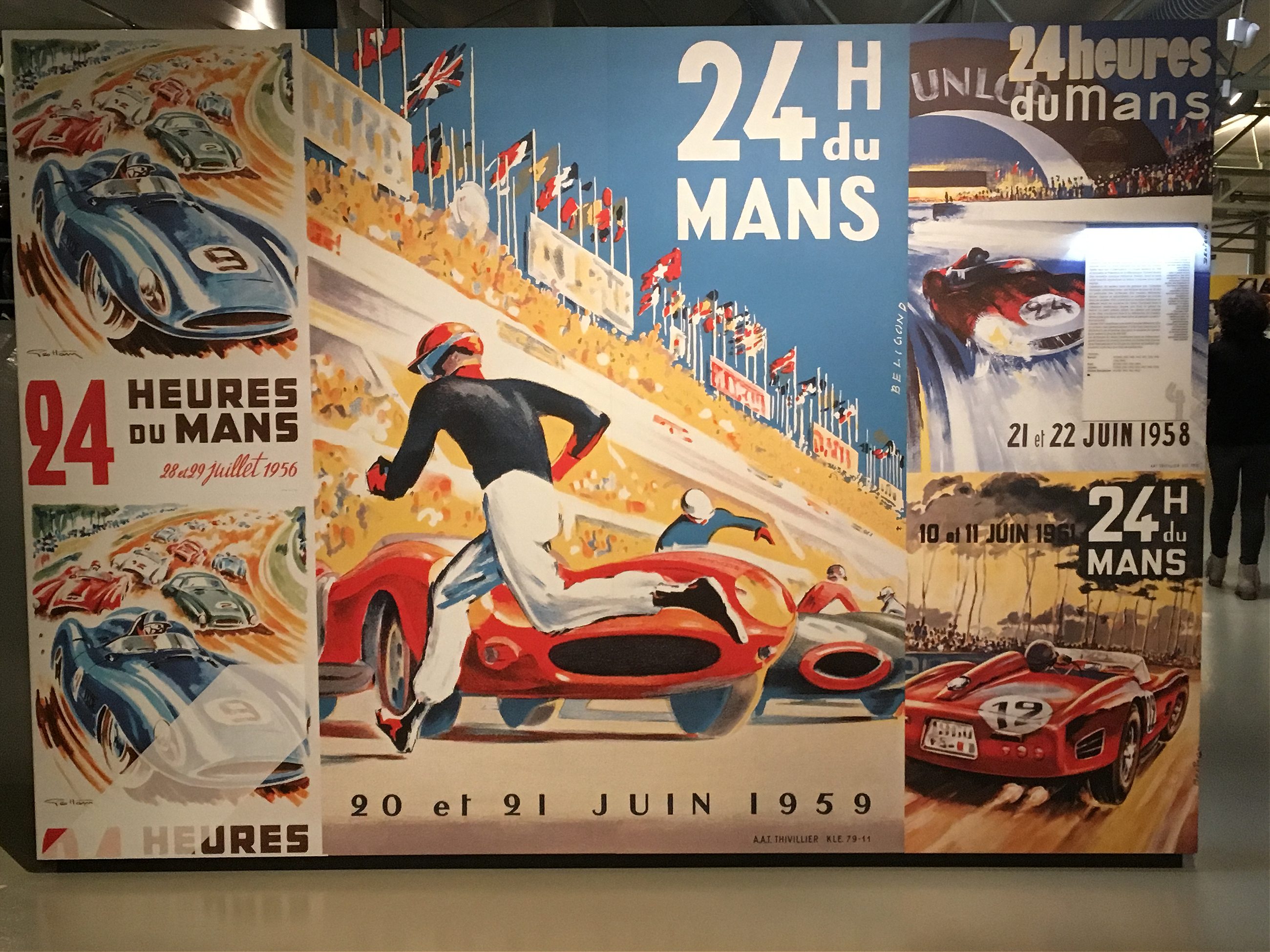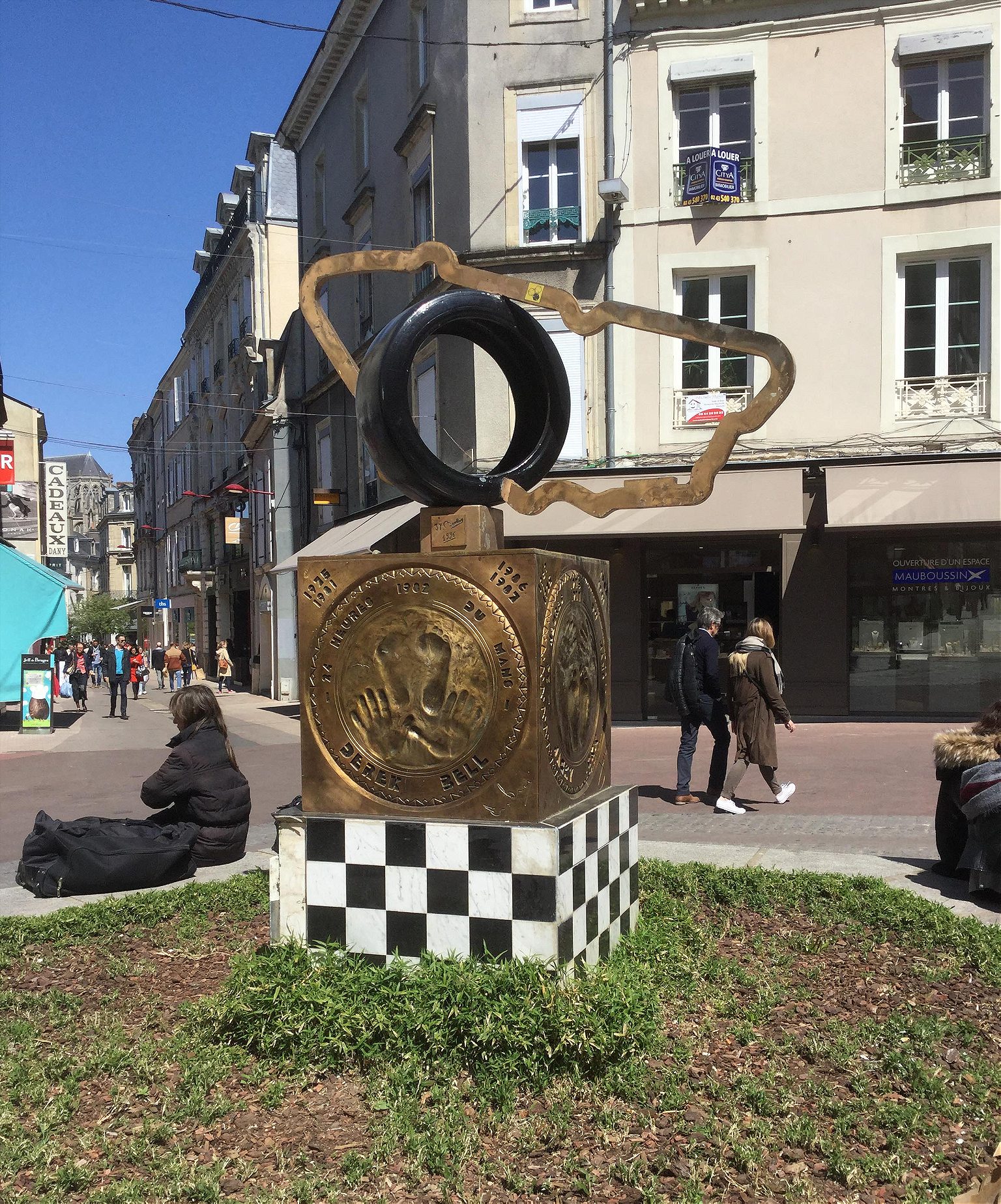The small city of Le Mans will be transformed this weekend as hundreds of thousands of spectators flock to see the famed 24-hour speed-car extravaganza.
For one weekend every year, the unassuming city of Le Mans, nestled in the French countryside between Paris and the Brittany coast, becomes a global hot spot. Like clockwork, this Saturday hundreds of thousands of people will converge upon the capital of the Sarthe region to experience the 24 Hours of Le Mans, a 24-hour car race that is a titillating confrontation of man versus machine. Founded in 1923, it is now the grand dame of endurance auto racing, combining speed and persistence as drivers cover the equivalent of roughly 3,000 miles from Saturday to Sunday. It’s been immortalized in Steve McQueen’s cult classic, Le Mans; graced by celebrity drivers like Paul Newman and Patrick Dempsey; and peppered with the occasional fatality.
Pulling off the 24 Hours of Le Mans each year takes a lot of work. It’s not the only 24-hour endurance race hosted by the city: there’s the 24 Hours of motorcycling and the 24 Hours of karting, to name but two. Yet, it’s The Race—the one often referred to simply as “the 24 Hours”—that’s the main draw. For this city and its residents, the decades-old institution is more than just a race. It’s an economic engine and a driver of identity; an event that transforms the city. Roughly 270,000 spectators descended on the town in 2016, outnumbering locals about 2:1. “It’s not only a race,” says Frédéric Lenart, General Director of the Automobile Club de l’Ouest (ACO), which organizes the race. “It’s like a temporary city, in a way.”
Le Mans is a small city with long history. The birthplace of England’s King Henry II, it sports a late-third century Roman wall, one of the longest in existence in Europe. But it’s the other wall, the one marking the renowned racetrack on the city’s southern periphery, that serves as the city’s heartbeat, pulsating activity. By late April, its pulse speeds up, and the buzzing sound of cars testing their might greets visitors at the main entrance.
The vast complex, which includes two race circuits and a museum, is also ACO headquarters. For Lenart, the 24 Hours of Le Mans is his organization’s defining activity. “The 24 Hours of Le Mans is in the DNA of the ACO,” says the 50-year-old former steel industry executive.

The racetrack grounds are transformed as spectators and workers stream in. Upon crossing the main gate, visitors traverse an underpass and emerge onto a large fairground studded with dirt and pebbles. Known as The Village, this section dates to 1950 and contains refreshment concessions, souvenirs, and merchandise boutiques. Pass through The Village and one arrives that the tiered grandstands that overlook the finish line, one of the track’s iconic sites.
History is made along this stretch. For years, driver Jacky Ickx reigned as king of the circuit, coming in first place six times from 1969 to 1982. This feat was eclipsed by Tom Kristensen (nine wins) more recently. But the past is ever-present throughout the 8.47-mile circuit and grounds. Long before the 24 Hours was conceived, local inventor and car manufacturer Léon Bollée invited Wilbur Wright to demonstrate his biplane on a field that today is the track circuit’s Mulsanne Straight. Wright’s August 1908 flight, his first in Europe, convinced many skeptics of man’s ability to fly.
Other legends have played out along the grounds. At the race’s second iteration in 1924, the famous ‘Bentley Boys,’ a team of English racers, took first place. The win inaugurated a decades-long competition between English and French drivers for race supremacy and cemented the reputation of the Bentley automobile, as it would do for other marks in the future, like Ferrari. Some manufacturers, however, have instead gained infamy along the circuit. Such is the case of Mercedes, whose car caused the horrifying 1955 ‘fireball’ crash resulted in the deaths of 82 people, including driver Pierre Levegh.
This year, carmaker Audi—which dominated Le Mans for most of this century, winning 13 of 17 titles—withdrew last fall to focus on electric racecars. The news was met with trepidation by the ACO; people love to watch the Audis compete. But Lenart believes the absence of the crowd-pleasing car manufacturer creates new opportunities and suspense. “We really have a very nice, very exciting fight between Porsche and others,” he says of this year’s contest.
Also, there is much excitement over the enlargement of the race to include four additional cars, for a total of 60. While four more cars may not sound like a lot, the calculus within the rarified world of car racing is slightly different. “It’s enormous in terms of racing,” says Lenart.

To staff the event, the ACO hires thousands of locals as race preparations mount. From a core crew of 150-160 people in July, the ACO grows to nearly 5,000 people by race week as volunteers, doctors, food and beverage service personnel, sanitation workers, and more gear up to welcome the teams, press, and spectators. “It’s really important for a lot of people in Le Mans to have temporary work during that week,” Lenart says.
More than half (57 percent) of the race’s overall earnings each year is made in the two weeks before race day. In 2014, this resulted in 7 million euros earned for the local economy. This may not seem like much when compared to other clutch races around the world. The 400,000 spectators at the annual Indy 500 brought in an estimated $500 million for the local economy, according to a 2000 Indianapolis Motor Speedway study. Meanwhile, at Monaco Grand Prix, one hotel alone, the Hôtel de Paris, earned a cool $2.8 million during the 2010 event.
But for this small city, it is enough. The glamorous, glitzy jet-set lifestyle that typically surrounds world-class auto racing isn’t manifest in Le Mans most of the year. It’s a charming, clean, compact, and proud city, albeit an unfancy one. Bruno Ray, Director of the Le Mans Tourism Office and a native Manceaux, says the importance of the 24 Hours can’t be underestimated. “The week of the 24 Hours represents nearly three months of the local economy,” he emphasizes.

Ray first attended the 24 Hours in 1970, when Steve McQueen was on site filming. Throughout the years, in his experience, “the city lives to the rhythm of the race.” A week or two before the event, things start to kick into higher gear. Shops decorate their windows in the circuit’s colors, adding to the air of festivity and excitement. “Families come see the cars, as well as all the aficionados,” he says. Hotels sell out, not just in the city but throughout the region. Supermarkets see brisk business while spending at restaurants and bars surges.
Local businesses prepare well in advance for the hundreds of thousands of race-related tourists, and, unsurprisingly, some use the myths of Le Mans as a marketing tool. Take, for example, Le Steve, a new brasserie off the city’s central plaza, Place de la République. Its owner, Sophie Berthier, is a petite 57-year-old Lille native who proudly notes that her interior decorator once worked on the race track with McQueen during the 1970s. She also notes that the restaurant’s former owner brought the actor a sandwich every day. “He was his idol,” she says. While this will be Berthier’s first year operating Le Steve, she’s prepared.
“Everything will be ready,” she says firmly.

A few streets away at the Legends Café, another restaurant owner is giddy with expectation. “It’s amazing,” says 42-year-old Antoine Vaujois of the race and the weeks leading up to it. Learning from previous years—Vaujois bought Legends Café in 2007—he plans to hire six additional staff, stock-up on food and beer, and launch a revamped menu before the race. And for Vaujois, the 24 Hours of Le Mans is more than a way to lure tourists. A self-styled fixer, he’s passionate about sharing the race with others.
“My job is to be the concierge of Le Mans,” he says of his self-appointed role. Over time, Vaujois has developed relationships with the teams and manufacturers. He’s the person they call for directions when lost at all hours of the night or to help track down misplaced passports. He’s arranged an emergency appendectomy (his father is a surgeon in nearby Tours) and saved a certain celebrity driver (Patrick Dempsey) from flocks of female fans.
“He was like a deer in headlights,” he laughs of the actor, who was trailed by hundreds of girls in the street one night. “I saw the girls and brought him behind the bar,” Vaujois says. Dempsey then asked to help serve beers, to the delight of all. “That’s the magic of Le Mans,” Vaujois explains.
“I’m like a brother,” Vaujois says of his relationship with the drivers and crew members. “I’m part of the family.” On Sunday night after the race, drivers and other crew members make their way to Legends to knock back a few Bingos—a concoction of Red Bull and vodka—while a band plays. “When they’re back for the party, you have to be ready because it’s a big one,” Vaujois says.

It’s these crews and racecar drivers—known in French as pilotes—that provide the race’s entertainment. British pro driver Tim Sugden, 53, has raced circuits around the world throughout his career, but still feels the 24 Hours of Le Mans is something special. Even though he’s raced it several times before—his best finish (fourth place) was his first attempt in 1998—Sugden still aims to drive it again. “It has a certain Wimbledon effect,” he says, explaining why serious drivers from around the world flock to the race. “If you win Le Mans, then you really have achieved something outstanding.”
The crews and pilotes spend an unusual amount of time in this city, something many of them cherish. For Sugden, this is one of the key differences between Le Mans and all the other races. “The atmosphere is just so much different from everywhere else,” he says of the time spent in the city. “That really makes it, it emphasizes somehow the importance of the event.”
At most races, the teams are in-and-out in mere days, but at Le Mans they have the luxury of a week-long preparations en ville, time to build atmosphere and excitement around the event. Mechanics and engineers arrive two weeks before the event for practice; some, even earlier. But the entire team is on the ground by the Saturday preceding the race itself, for the Sunday and Monday scrutineering days. Scrutineering—the inspection of racecars to ensure safety and technical compliance—is part of the event in Le Mans, a chance for visitors and locals alike to get their first glimpse of the cars.
The pilotes and their crews spend most of their days at the track working on the cars, returning to hotels or rented chateaus late at night to recharge. But the tensions and tempo shift noticeably mid-week as thousands of spectators show up for the Wednesday evening test session, a four-hour practice run. “When you drive out of the circuit at midnight that Wednesday, suddenly people are on the camp sites and people are cheering,” says Sugden. The atmosphere becomes turbocharged.
The driver’s parade on Friday is the official race kickoff, an event that fuses fans, locals, and teams together and creates a truly unique vibe. Drivers are escorted up to the Place de la République in vintage automobiles, with roughly 150,000 people packing the three- to five-mile route. Pilotes sign autographs and shake hands with the crowds who fête them with wild enthusiasm. “As a driver,” Sugden says of the carnival-like atmosphere, “it’s a really special thing.”